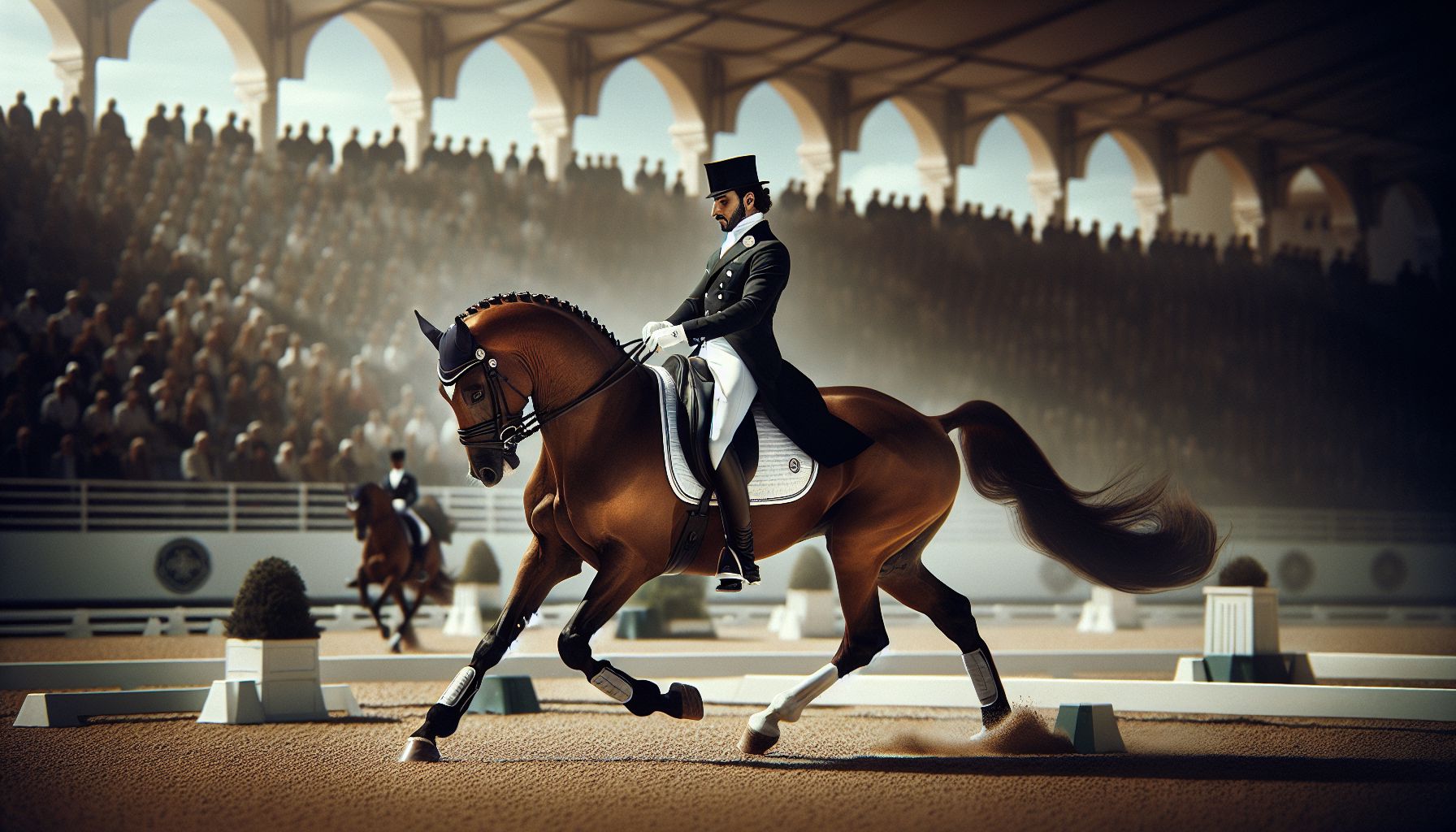Have you ever watched a horse and rider combination dance effortlessly through a perfectly executed routine, their movements in perfect sync? This captivating and elegant display you witnessed was likely dressage. Dressage, pronounced as “drah-SAHJ,” is an ancient equestrian discipline that has grown into an art form over centuries. In this blog post, we’ll dive into the fascinating world of dressage – its history, core principles, and the sheer poetry that unfolds in every movement.
Laying the Foundations: A Historical Overview
Hailing from ancient Greece, the origins of dressage date back over 2,000 years. Initially developed as a training method for war horses, dressage (which means “training” in French) focused on enhancing the strength, agility, and responsiveness of horses. Over time, dressage evolved from a practical necessity to an art of refinement, elegance, and harmony between horse and rider.
Unveiling the Dance: Understanding Dressage
At its core, dressage is designed to enhance and showcase the horse’s natural movements and abilities through a series of meticulously choreographed routines. These routines, known as “tests,” encompass a sequence of prescribed movements executed in predetermined patterns in a rectangular arena. Each test is scored by judges based on the precision, harmony, and overall quality of the horse’s performance.
Dressage tests are categorized into levels, ranging from introductory levels suitable for beginners to highly complex and demanding movements seen at the Olympic level. As riders progress, they refine their skills and advance through increasingly challenging tests, demonstrating their mastery of dressage concepts and techniques.
A Symphony of Communication: The Aids
One of the fundamental principles of dressage is the use of aids: subtle, barely perceptible cues from the rider that communicate the desired movement to the horse. These aids encompass the rider’s seat, legs, hands, and voice, working in unison to achieve perfect harmony.
The seat aids, conveyed through subtle shifts in weight and pressure, allow the rider to control the horse’s rhythm, speed, and overall balance. Using their legs, riders apply gentle pressure or squeeze to encourage specific movements, such as sideways steps or a lengthening of stride. The rider’s hands provide nuanced cues through the reins, guiding the horse’s head and neck posture, and signaling transitions or changes in direction. Lastly, spoken words or vocal signals act as supplementary aids, further refining the communication between horse and rider.
From Simple to Sublime: Progression in Dressage
Dressage training follows a logical progression, with riders and their equine partners building a strong foundation before advancing to more complex movements. At the lowest levels, fundamental concepts such as rhythm, relaxation, and impulsion are emphasized. As riders become proficient in their basic skills and communication, they start to introduce lateral movements, such as leg-yields or shoulder-ins, encouraging the horse to become supple and flexible.
As riders climb the dressage ladder, they tackle more intricate and awe-inspiring movements. Collection, a pinnacle of dressage, showcases the horse’s ability to shift their weight backward. This feat requires tremendous athleticism and strength, enabling the horse to elevate their forehand while maintaining a controlled, powerful stride.
A Meeting of Minds: The Horse’s Role in Dressage
Central to dressage is the partnership between horse and rider. Dressage encourages a deep understanding and connection between the two, enabling them to communicate with the utmost precision. Beyond physical training, dressage cultivates mutual trust, respect, and an unspoken bond that elevates their performances to new levels of artistry.
Horses flourish in dressage environments when they are treated with compassion, patience, and kindness. The pursuit of excellence in dressage hinges on recognizing and appreciating the unique strengths and quirks of each horse, working alongside their natural inclinations rather than forcing them into a predetermined mold.
The Journey: Dressage as a Lifelong Pursuit
Dressage is not an endeavor that can be mastered overnight. Instead, it is a lifelong journey of self-improvement, patience, and ongoing education. The pursuit of excellence in dressage demands riders to be dedicated students, continuously refining their techniques, seeking guidance from accomplished trainers, and attending clinics or competitions to gain valuable insights and perspectives.
Furthermore, dressage teaches valuable life lessons beyond the realm of the arena. It instills discipline, perseverance, and humility, emphasizing the importance of clear communication, listening, and cooperation – virtues that extend far beyond the equestrian world.
Finding Beauty in Every Stride: Dressage as a Spectator
Whether you’re a rider, an equestrian enthusiast, or simply a lover of beauty and grace, dressage competitions provide an entrancing spectacle. The choreographed movements, precision, and seamless communication between horse and rider offer a feast for the eyes, captivating all who witness it.
Just like any other art form, dressage evokes emotions, incites awe, and tells stories through every movement. It transcends the boundaries of language, culture, and geography, bringing people together to celebrate the profound connection between humans and animals.
The Legacy Lives On: Celebrating Dressage
In conclusion, dressage is an enchanting amalgamation of athleticism, artistry, and the bond between horse and rider. From its humble beginnings as a training method for war horses, dressage has flourished into a discipline that marries grace with power, precision with expression.
Whether you’re an avid equestrian or a casual observer, take a moment to appreciate the beauty and dedication that goes into each dressage performance. So, next time you witness a horse and rider gracefully waltzing through a dressage routine, let yourself be swept away by the elegance and harmony that defines this mesmerizing equestrian sport.
